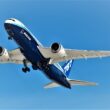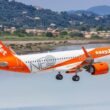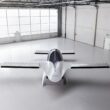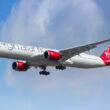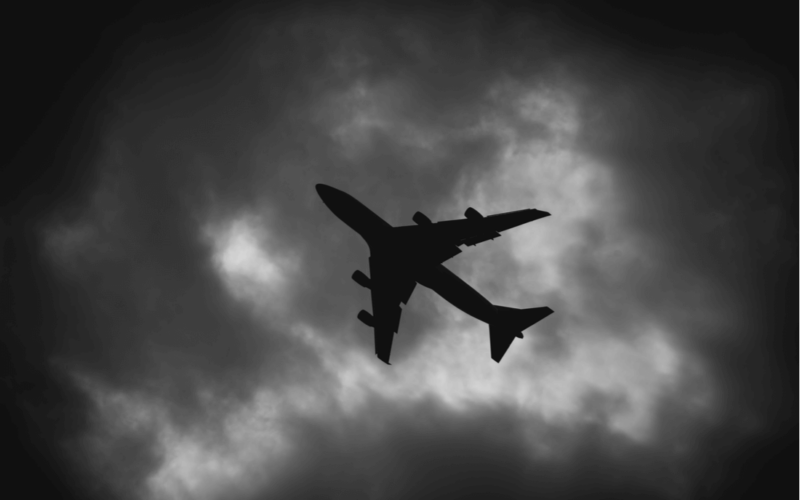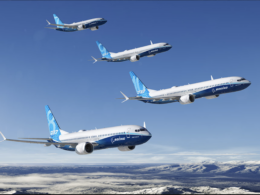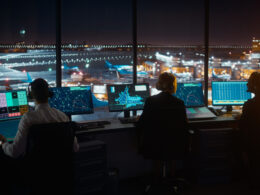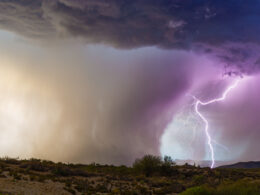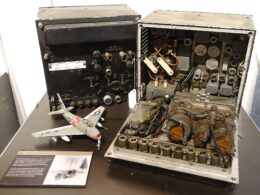Over the years, aviation has evolved into unseen comfort. Newest interior modifications, including lay-flat seats and interior lighting modifications, have allowed passengers to stay as calm as cucumbers during their journeys throughout the world. Yet sometimes, the calm journeys could have turned for worse.
But either by sheer luck or incredible airmanship demonstrated by the pilots, everyone on board could, later on, tell the horror tale of the flight.
5. A corny Ural Airlines Flight 178
On August 15, 2019, Ural Airlines Airbus A321, carrying 233 people on board (226 passengers and seven crew members) departed from Zhukovsky International Airport (ZIA) in Moscow, Russia towards Simferopol International Airport (SIP) in Ukraine, when shortly after take-off, the two CFM-made engines consumed birds simultaneously. After losing power on both engines and finding themselves at low altitude, the flight crew had no other option but to land ahead – fortunately, a cornfield, situated about 1.8 miles from Zhukovsky was flat enough for the crew to land safely without any power on their engines at all.
After the crash, 29 passengers were taken to the hospital, while more than 50 people received immediate attention at the site.

Picture: Fasttailwind
The aircraft was broken up on-site, as it was damaged beyond repair.

Picture: Dmitry Serebryakov
4. Miracle on the… Neva?
That sentence is correct! In 1963, much much earlier than the Miracle on the Hudson, a Tupolev Tu-124 landed in a river in the city of Leningrad, now known as St. Petersburg.
The Tu-124, nicknamed “Squeezed Tu-104”, departed from Tallinn Airport (TLL) towards Vnukovo Airport in Moscow (VKO). Immediately after take-off, the flight crew encountered severe issues with the aircraft – its landing gear would not retract fully, stuck at the half-way point. While the pilots requested to divert back to Tallinn, permission was denied due to heavy fog that had descended upon the airport, so the crew chose to fly to St. Petersburg and land at Pulkovo Airport (LED).
Before attempting to land on one of the unpaved runways at the airport, the flight crew had to dump fuel to reduce the weight on board. Yet the unfortunate chain of events continued – the gauges on board were not working properly, thus the Aeroflot Tu-124 carried much less fuel than pilots and the flight engineer anticipated.
As the engines died out, the captain decided the only option was to attempt a landing in the Neva, a river running through St. Petersburg. The aircraft landed successfully and incredibly, with the help of a tugboat, made its way back to shore – reportedly, no passengers sustained any injuries in the Miracle on the Neva.
3. Miracle on the Hudson!
In very similar circumstances to the Ural Airlines Flight 178, a US Airways Airbus A320 departed from New York-LaGuardia Airport (LGA) towards Charlotte Douglas International Airport (CLT) in North Carolina on January 15, 2009. What began as a fairly normal flight, turned out to become one of the flights to be ingrained in aviation history forever.
A few minutes after leaving LaGuardia (LGA), First Officer Jeffrey B. Skiles said “Birds”. Just seconds after, the aircraft’s two engines sucked in geese and immediately lost power. While Air Traffic Control suggested diverting back to LGA, Captain Chesley “Sully” Sullenberger told the controller that he was unable to do so. The last-ditch option was Teterboro Airport (TEB) in New Jersey.
Unfortunately, this was not an option either – Captain Sully realized it, telling the controller that “we can’t do it”. As the controller responded, asking “which runway would like at Teterboro”, the answer he got was – “we’re gonna be in the Hudson”, as the Airbus A320 did not have enough altitude and speed to reach Teterboro.
Jeff intuitively knew he should help me judge the height above the river to begin the landing by calling out airspeed and altitude. While the impact was hard, I could tell the plane was intact and floating. Jeff and I said almost in unison – “That wasn’t as bad as I thought.” pic.twitter.com/RqWJDn4Nxe
— Sully Sullenberger (@Captsully) January 15, 2019
To the surprise of many, the US Airways aircraft landed in the Hudson river during the freezing New York winter. Fortunately, none of the crew and passengers were injured. Multiple boats and ferries traveling through the river picked up the passengers from the wings of the A320.
2. PULL UP Air Canada Flight 759
A flight number that has not been used since the incident on July 7, 2017, Air Canada Flight 759 was a regularly scheduled service between Toronto Pearson International Airport (YYZ) and San Francisco International Airport (SFO), that took off from the Canadian city just before 10 PM local time, about 30 minutes later than it was supposed to.
Most of the flight, apart from an area of thunderstorms mid-way through the flight, was uneventful. However, at about a quarter to midnight in Toronto’s local time, the crew reported signs of fatigue, about two hours before landing in SFO.
Meanwhile, at San Francisco, Runway 28L was closed for repairs with its lights shut off – only a 20.5 foot wide X was flashing at the eastern runway threshold. The local San Francisco airport Air Traffic Control issued the clearance to land at Runway 28R to Air Canada Flight 759.
Due to fatigue, both pilots did not notice or did not pay enough attention to the issued Notice to airmen (NOTAM), which notified the pilots about the closure of Runway 28L. As stated in the NTSB report, both crewmen noted that the Taxiway C surface resembled a runway for them, thus they thought that Runway 28R was the closed Runway 28L and Taxiway C was Runway 28R, at which the local San Francisco ATC had cleared the Canadian crew to land in.
The aircraft lined up to land on Taxiway C and just 14 feet (4.3 meters) separated the Air Canada Airbus A320 and an Air Philippines Airbus A340’s tail, before the Air Canada (ADH2) jet pulled up and conducted a normal turn-around, landing at SFO normally.
1. Japan Airlines Boeing 747 and DC-10 near-collision mid-air
While the former NTSB chairman called the Air Canada (ADH2) near miss on San Francisco’s Taxiway C “the most significant near-miss we’ve had in this decade”, two Japan Airlines aircraft nearly colliding mid-air in 2001 would have become the deadliest accident in aviation history.
A Japan Airlines Boeing 747-400 took off from Tokyo Haneda International Airport (HND) en-route to Naha Airport (OKA) on the island of Okinawa, carrying 427 people – 411 passengers and 16 crew members were present on board. Flight 907 took off from HND at 3:36 PM local time.
Meanwhile, a Japan Airlines McDonnell Douglas DC-10 was flying from South Korea’s Gimhae International Airport (PUS) in Busan to Tokyo-Narita International Airport (NRT) on Flight 958 – the DC-10 was descending just before landing at Narita.
The pilots of the two aircraft received a warning from their Traffic Collision Avoidance Systems (TCAS) that they are on a path of a mid-air collision. Following the warning, the captain of the DC-10 descended further. The flight plan indicated that the two jets were supposed to be separated by 2,000 feet of altitude.
A trainee air traffic controller, who overlooked traffic above Tokyo, mistakenly told the 747 to descend, while telling the DC-10 to take a turn towards the south-east. The message to turn south-east never got through to the pilots, even if they were told to do so twice, according to an Associated Press report. Thus, the two jets were on a course to collide mid-air.
A supervisor of the trainee took over in order to avoid the disaster. Mistakenly, she called out Flight 958 – which was not the DC-10’s code – to descend immediately, yet Flight 957 never responded, as the captain of the tri-jet thought that ATC was talking to a different aircraft.
The Queen Of The Skies’ Captain, Makoto Watanabe, made a sharp maneuver downwards in order to avoid the other Japan Airlines aircraft, and according to a report by BBC, the two aircraft missed each other by 35 feet (10.6 meters). 42 people on board the 747 were injured, two of whom seriously, according to a report by Associated Press from 2001. The Double-decker jet returned to its origin airport, Haneda (HND), safely.
To sum up, potentially, these could have been the most fatal air disasters:
- Ural Airlines Flight 178
- Aeroflot Neva ditch
- US Airways Flight 1549
- Air Canada Flight 759
- Japan Airlines Flight 907 and Japan Airlines Flight 957

